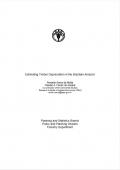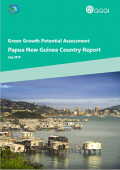This paper sheds light on remaining controversies about whether and how to implement environmental accounting by means of nine country case studies: Norway, The Netherlands, Sweden, France, Canada, The Philippines, Namibia, Germany, and the United States.
The objective of this case study is to construct forest resource accounts for the state of Maharashtra, India, and incorporate the value of depletion and degradation of forest resources into the system of national accounts (SNA).
This publication summarizes the results and methodological findings of a first round of test applications of the European Framework for Integrated Environmental and Economic Accounting for Forests. Its objective is to provide an insight into the experience gained and progress made in linking forest-related data to the national accounts.
This study demonstrates the economic techniques for estimating the Total Economic Value (TEV) of forests. For the Mexican forest estate, the results show an annual lower bound value of the services of the total forest area to be in the order of $4 billion.

This case study applies forest accounting approaches to estimate economic depreciation of timber exploitation in the Amazonian region.
This report presents the results of an attempt to derive a damage function for soil loss using 20-year data projected through the application of the Erosion Productivity Index Calculator (EPIC) in one soil conservation project site in the Philippines.
This case study estimates the amount of rent generated by minerals and fisheries in Namibia and analyses the success of the government in recovering this rent for the good of the people. From an economic perspective, sustainable and equitable management of these resources requires that resource rent be recovered by the government through appropriate taxes. The report's findings indicate that while the resource rents generated by mining have been captured through taxes, the rents generated by fisheries are not yet fully captured by the fishing quota levies.
This case study, From Digging to Planting: A Sustainable Economic Transition for Berau, East Kalimantan, produced as part of Project LEOPALD or Low Emissions Oil Palm Development examines whether palm oil’s potential as an economic driver will bear out for Indonesia’s goals, using Berau as an example case.

The publication Climate Smart Agriculture: Successes from Africa

This report, Green Growth Potential Assessment: Papua New Guinea country report presents the findings of the Green Growth Potential Assessment (GGPA) of Papua New Guinea and details the recommendations, each supported by a solid rationale and directly support achieving the goals set out in Papua New Guinea’s Vision 2050.
